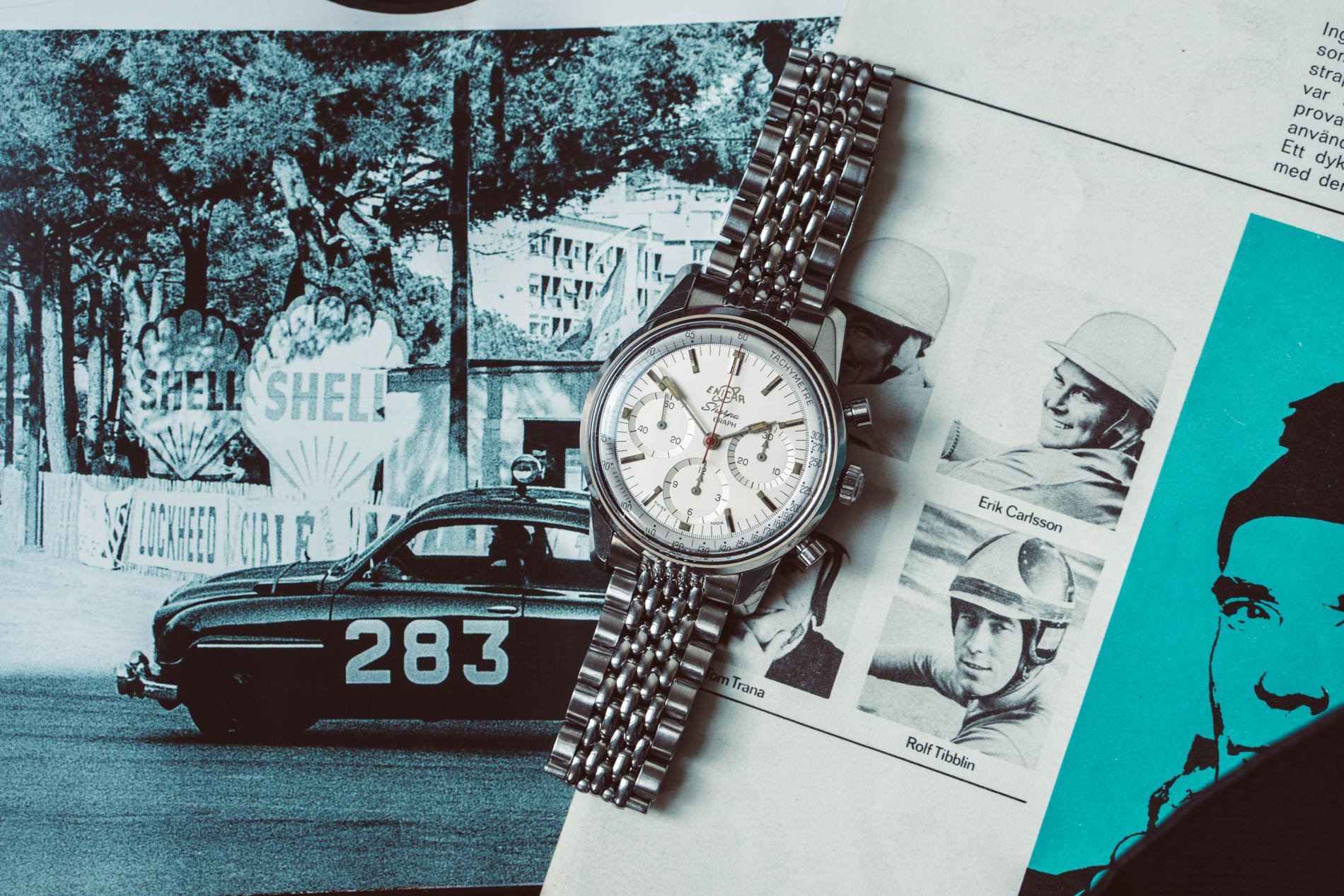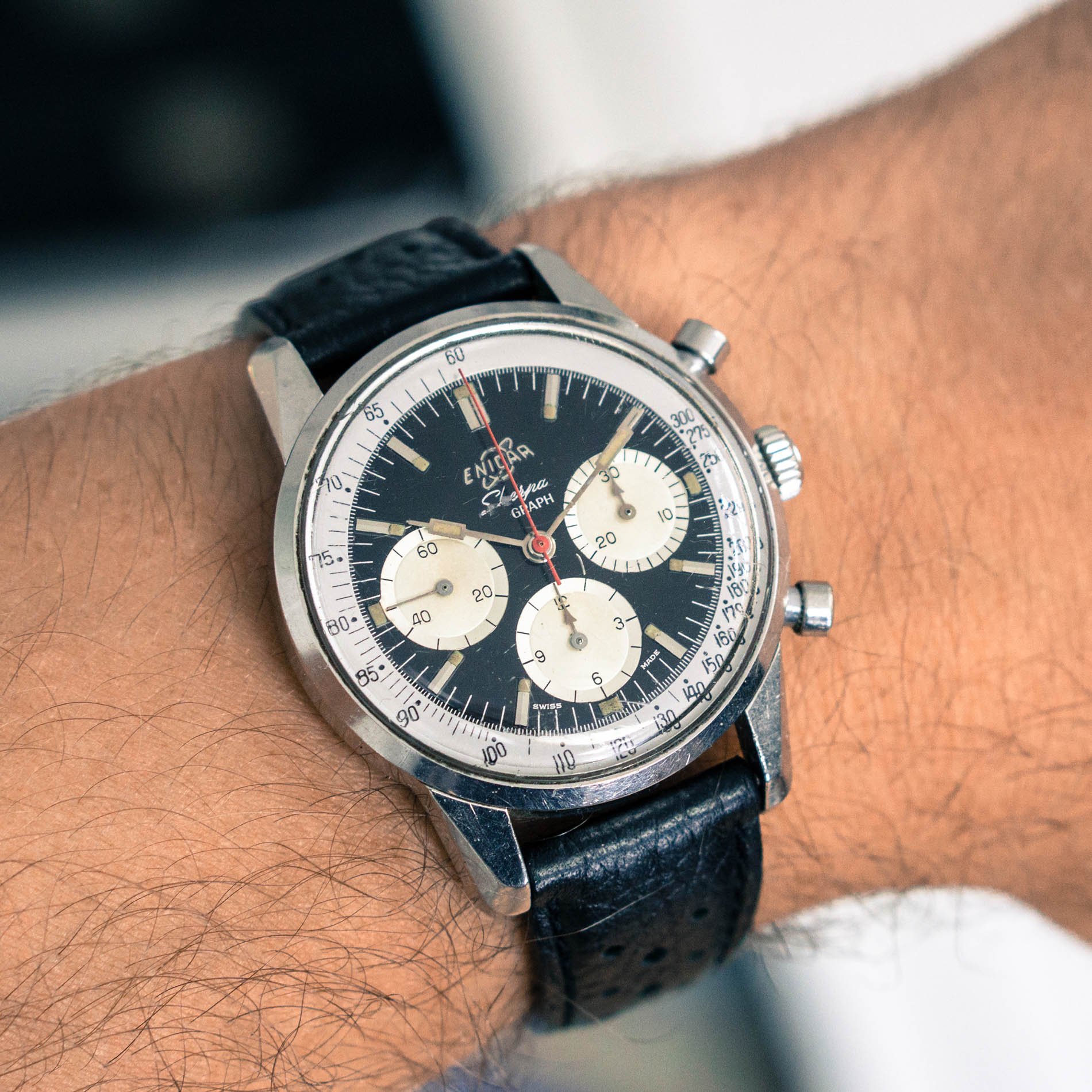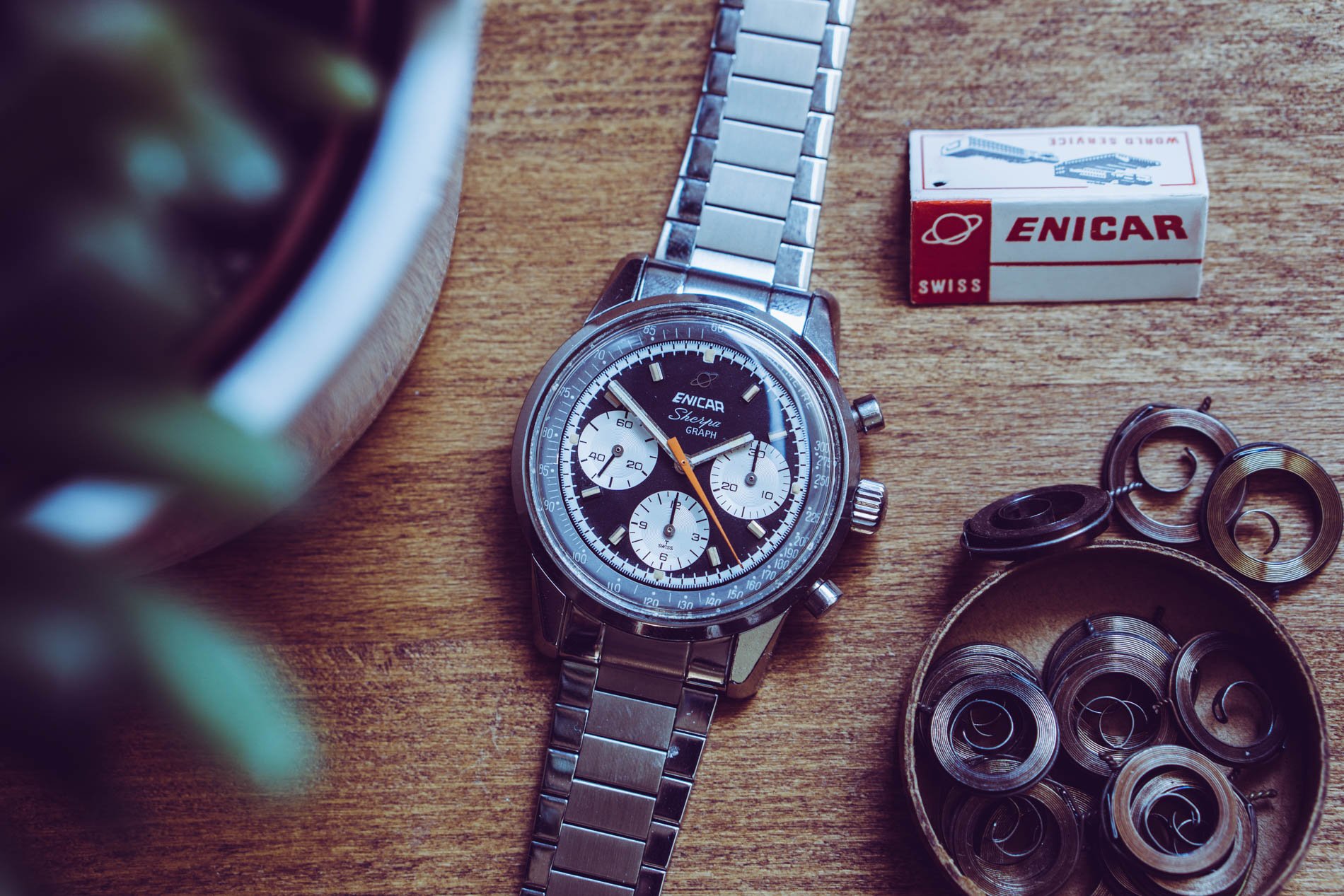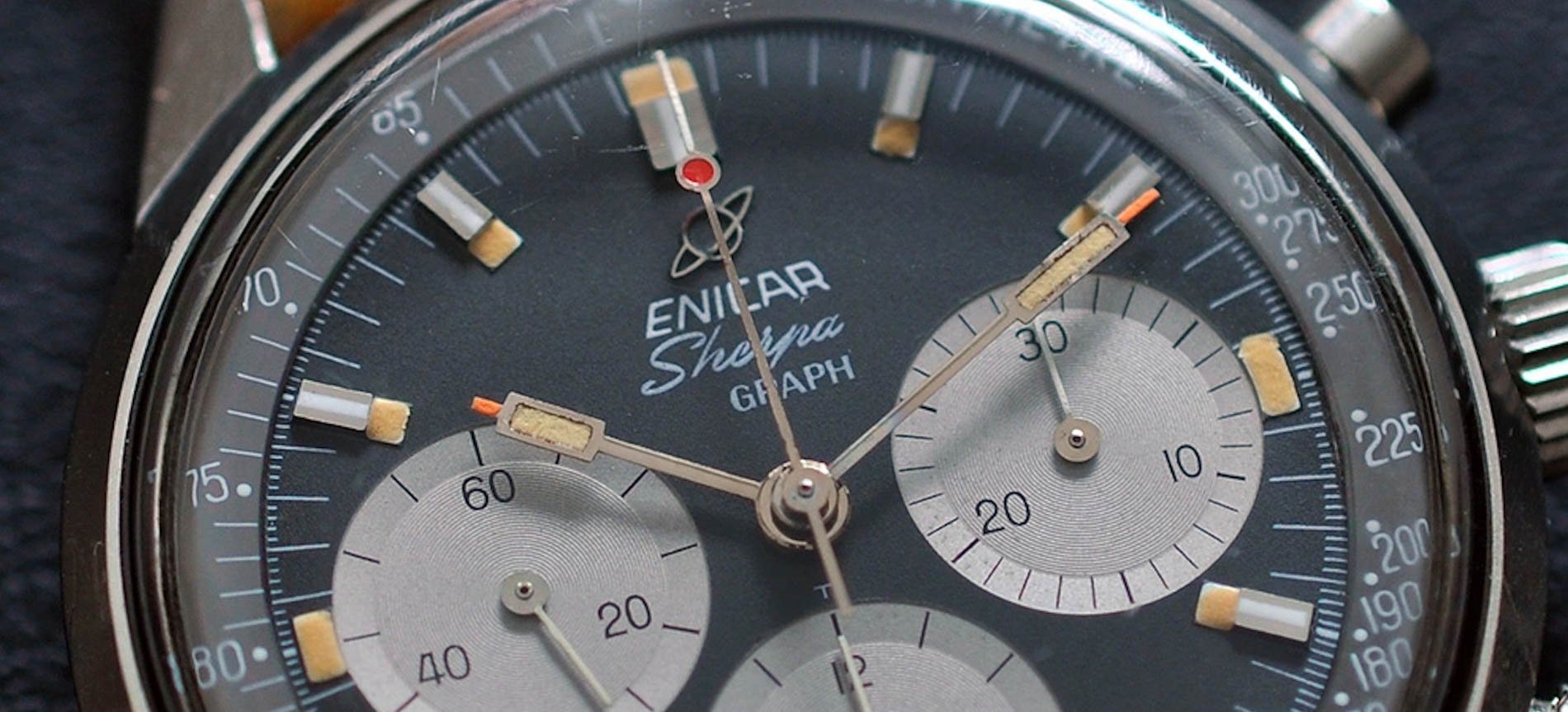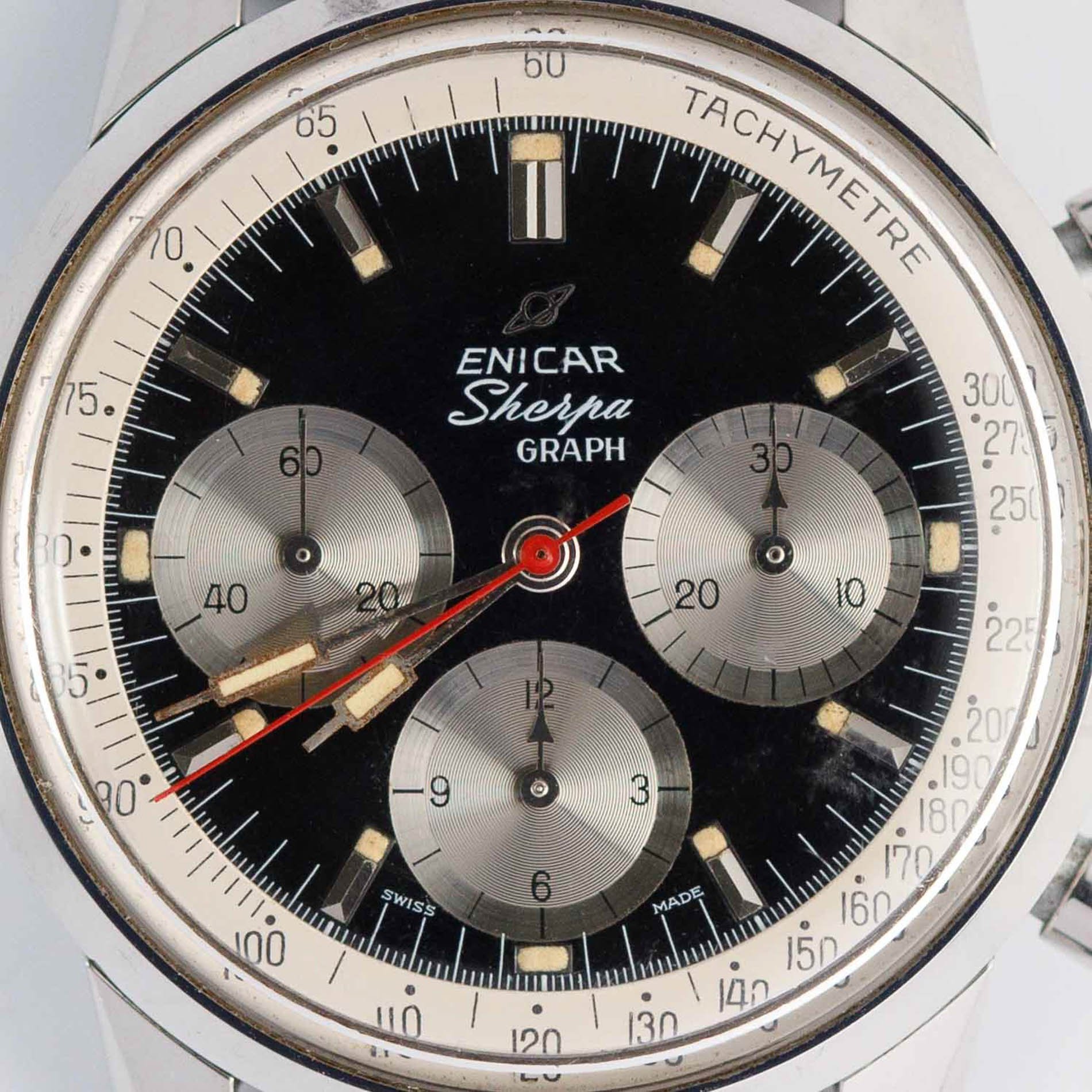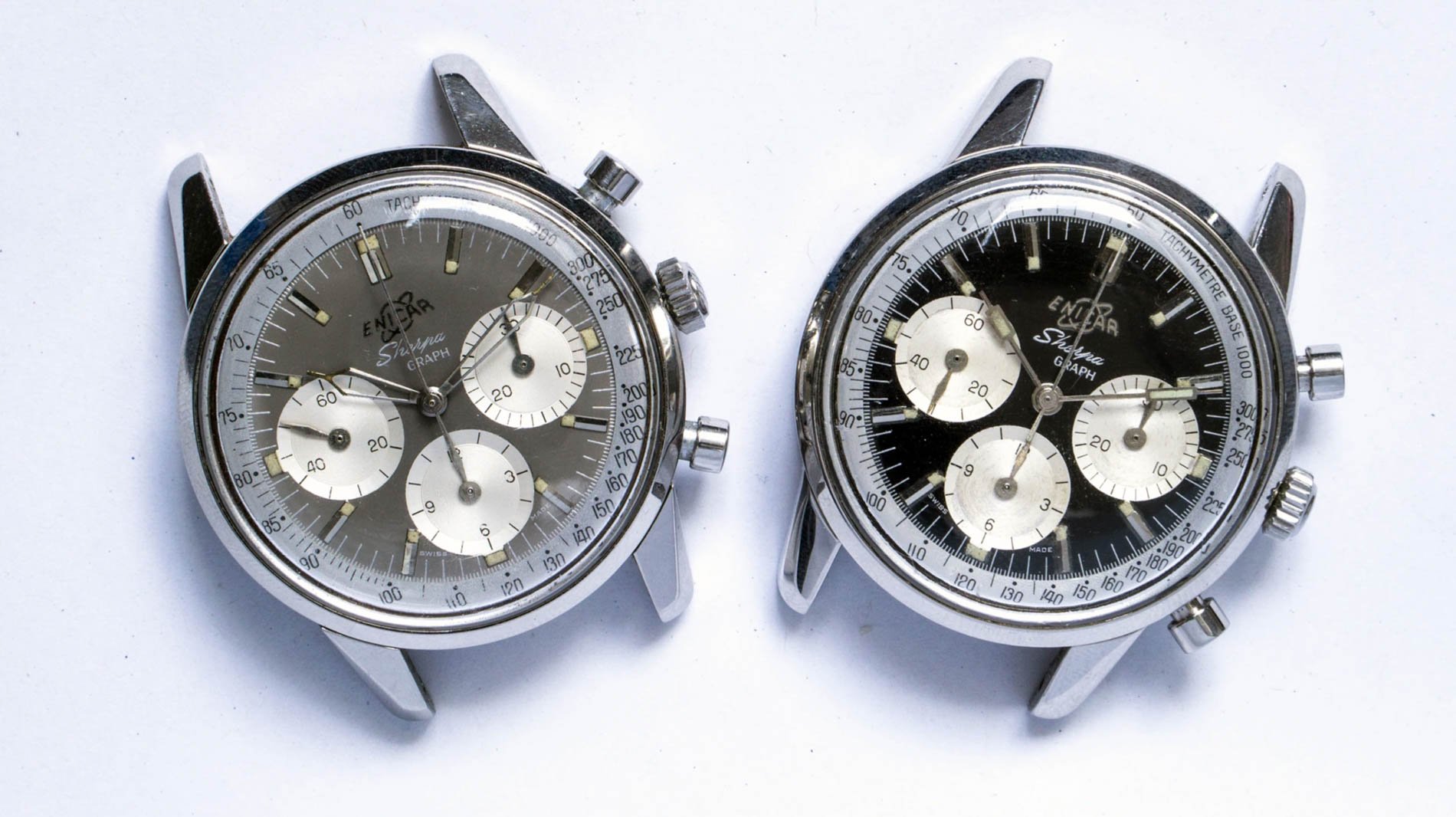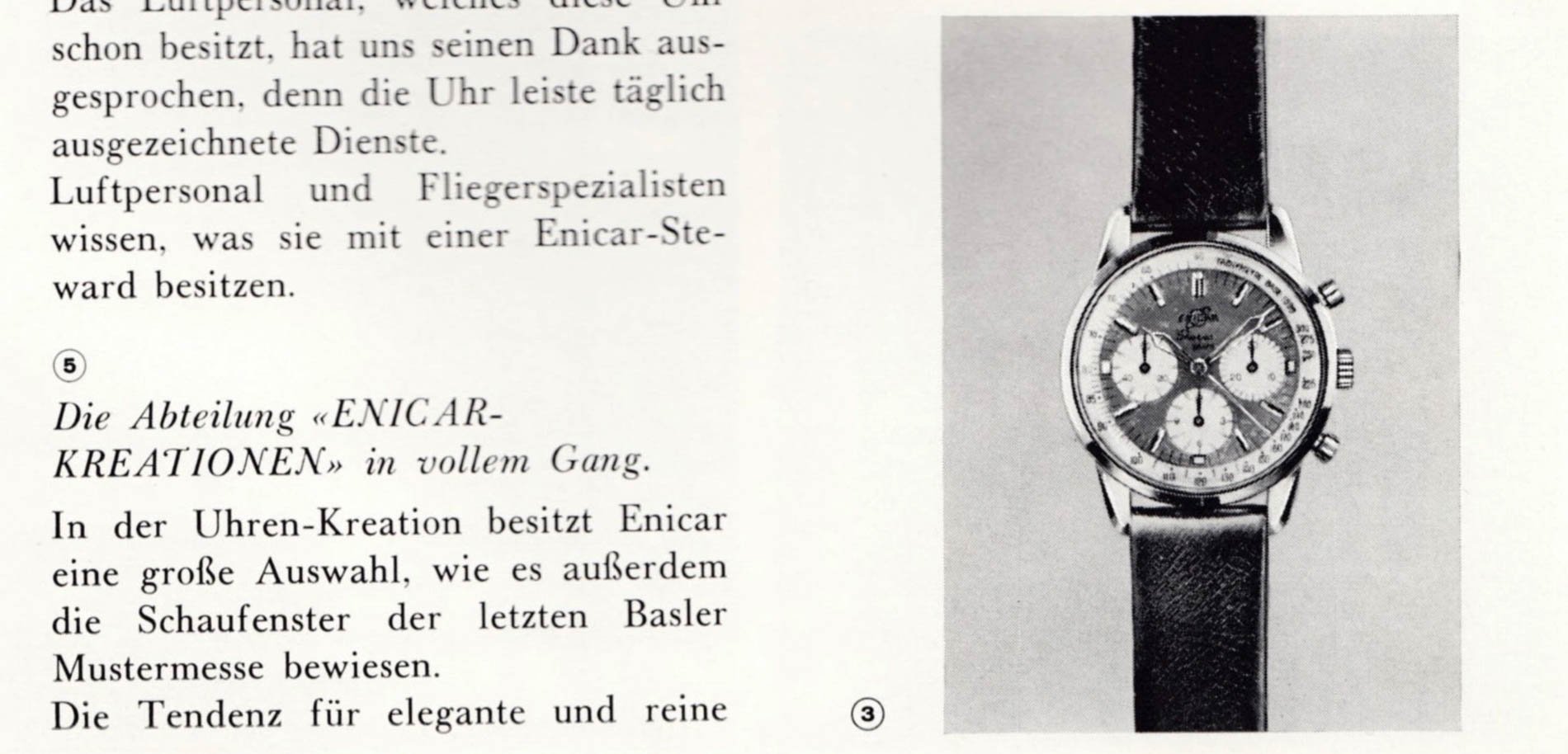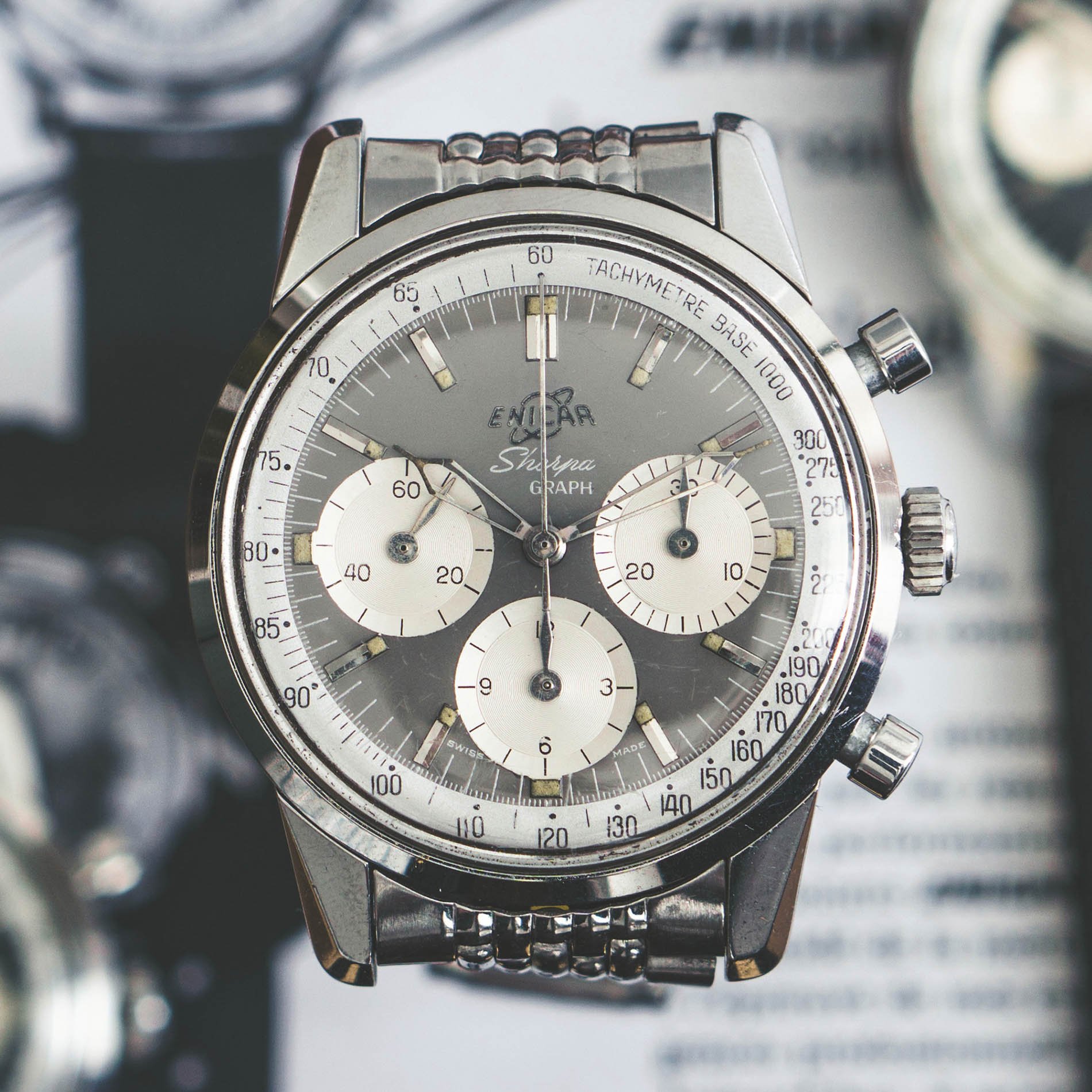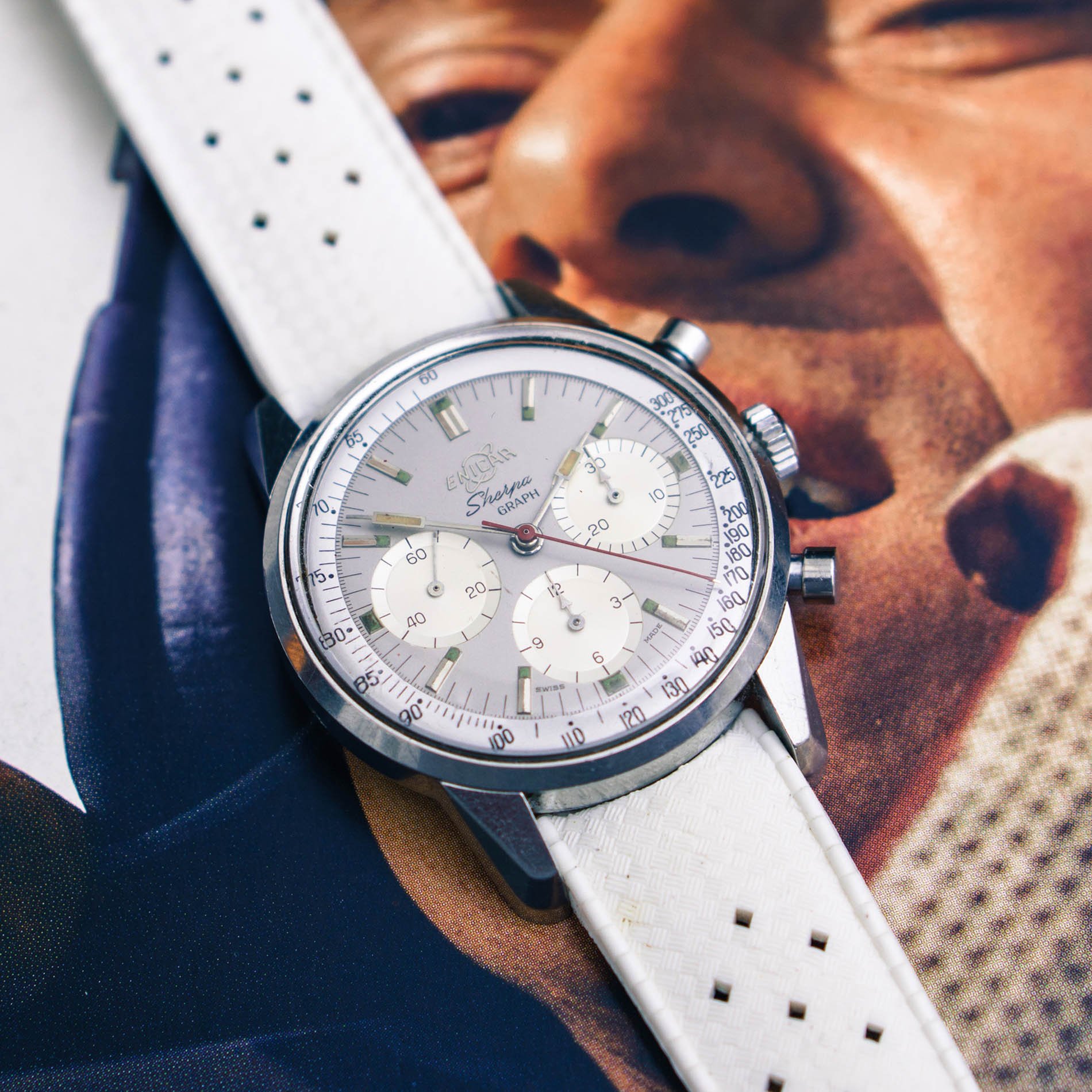#TBT Understanding The Different Enicar Sherpa Graph Executions
I have had the idea for this article at least as long as I’ve known Nico Henke, a German-based collector who we can rightly call an expert on all things related to Enicar chronographs. It’s time to roll up our sleeves and, with Nico’s help, explore the phenomenal line of Enicar Sherpa Graph watches.
Maybe you know Nico too, but you just don’t know it’s him. He is known around Instagram as @_jimjupiter, and he is also an author of the Enicar Sherpa Graph Reference Guide you can find here. Nico is always my number-one contact when I spot a nice Enicar chronograph I am thinking about buying. Over the years, we discussed multiple Sherpa Graphs I discovered listed in auctions all over the world. Sadly, though, none of them landed in my collection.
The Enicar Sherpa Graph: a hard-to-find-watch with a strong community
One of the reasons is the price, of course. For me, it’s almost shocking how stable prices for Enicar Sherpa Graphs are, easily jumping over the €5K, €7K, or even €10K thresholds for an early execution. In my opinion, this is even more interesting if you consider that vintage Enicar watches don’t get a ton of coverage from major watch media. Just looking into our Fratello archive, we published just one piece on Sherpa Graphs back in 2015. Thanks, Mike!
Still, no matter the lack of media coverage or Instagram frenzy, the Enicar community is one of the strongest. Is there any Sherpa Graph resurfacing in the most remote corner of the world? Don’t get excited too soon; Enicar fans will most definitely sniff it out, and there will be a fierce auction fight. I’ve been there, seen that, and walked away defeated multiple times. Even the recent years’ shake on the vintage watch market confirms my amateur observations. While many watch prices stumbled, Enicar is holding relatively stable.
Four generations
The Sherpa Graph line debuted in 1960, three years earlier than any other Graph variation, and it was also the series with the longest manufacturing period, reaching 1969. Next week, we will look into Enicar’s connection to motorsport, which was stronger than you could expect. But before we do so, we need to understand the differences between the individual generations of Enicar Sherpa Graph chronographs.
Starting from the end with the Sherpa Graph MK IV
I decided to juggle it a bit and start from the end. The reason is simple: the Enicar Sherpa Graph MK IV was always my favorite execution. I remember three auctions in which I was outbid just by €100, so this watch keeps slipping through my fingers. The MK IV with reference number 072 – 02 – 01 first appeared in late 1967. It’s pretty beefy with a 40.2mm case diameter, and it looks the sportiest of all the Sherpa Graphs.
The watch was also available with a white and gray dial setup, but I prefer the more common version with a black or dark blue dial and white sub-dials. This version brought a major update to the style of the hands, and that’s probably why it became my favorite. Its baton-style minute and hour hands are painted white and perfectly legible. The hand for the minute counter was typically orange or red to match the triangular central chrono hand.
Enicar Sherpa Graph MK III
It has the same case and same reference, and it came three years before the MK IV, so in 1964. The minute and hour hands are paddle style, each with a rectangle of tritium lume and an orange tip. The orange tip is shorter than it was on earlier models. Also, these hands are unpainted, which I don’t prefer. Over my years of collecting, I’ve realized that I have legibility issues with non-painted hands. Anyway, the Sherpa Graph MK III offers a range of dial options, such as full black, full white, or combinations of colors. A nice detail lies on the central chronograph seconds hand —a red-painted round spot right before the tip.
Enicar Sherpa Graph MK II
This one still has the same case, but the reference is 072/001, and it came out around 1963. As a Gallet fan, I like minute and hour chrono hands with little arrows on them. Notice the tips on the central hands; they are not painted. The MK IIa has one of the older, thin compressor crowns, but it has Saturn on it. The crown is way smaller than the ones of the later references. You can bump into variants with white, white-silver, or all-black dials. However, the most common dial for this reference is black and silver. There is also MK IIb, which has a lollipop chrono seconds hand on later examples and the thin sub-dial hands.
The mighty Enicar Sherpa Graph MK I
While the combined production of MK IV and MK III contained almost 6,000 units, the production estimate for MK II is only 25% of it, so about 1,600 pieces. The Sherpa Graph MK I was probably similar in volume. The most sought-after Enicar Sherpa Graph is the MK Ia, which has an estimated volume of 500 watches. Nico has an ongoing archiving project for serial numbers, which you may find useful if you consider buying one.
What we call “MK I” today was the first Sherpa Graph announced at the Mustermesse Basel 1960. It carries the reference number 1308 BaNCH, and shortly after, it was published in the Enicar in-house Saturn magazine. The MK Ia’s dial was either gray or black with white sub-dials. Notice the old Enicar logo with Saturn, which is way bigger than later models. It’s important to notice that the MK I is the only Sherpa Graph with radium lume.
Tricky hands
The next signature detail besides the faded gray dial is sword hands, or “Gladius hands,” as Nico calls them. Before I was familiar with the first execution of Sherpa Graph, I thought that the skeleton hands were missing the lume. Fascinatingly, these hands were available both with and without radium lume. Also, remember that early Sherpa Graphs didn’t have Saturn on their thin compressor crowns. It’s easy to jump to the conclusion that the crowns were replaced, but Nico’s research confirms early crowns were not signed. If you are interested in learning more about the MK Ib execution and the specific differences between the MK Ia and later ones, here is an in-depth article.
Last thoughts
My only hands-on experience with vintage Enicar chronographs is tied to the Jet Graph, which was a GMT chronograph with an extra hand and a 24-hour bezel. I was close to landing a Sherpa Graph four times, but I never made it across the line. When I reflect on my decisions, I think it was an affection towards MK IV that made me go easy (or low) during auctions on early executions. And you know what? If I were about to decide today, I would go for the non-lumed MK I. My taste evolved, it seems. I still find the MK IV the most legible of all the executions, but the MK Ia appears to have a more individualistic style and super magnetic patina. Happy hunting! And stay tuned for next week to see how Enicar made its way to the top of motorsport.
Thank you, Nico, for all the nice images.

